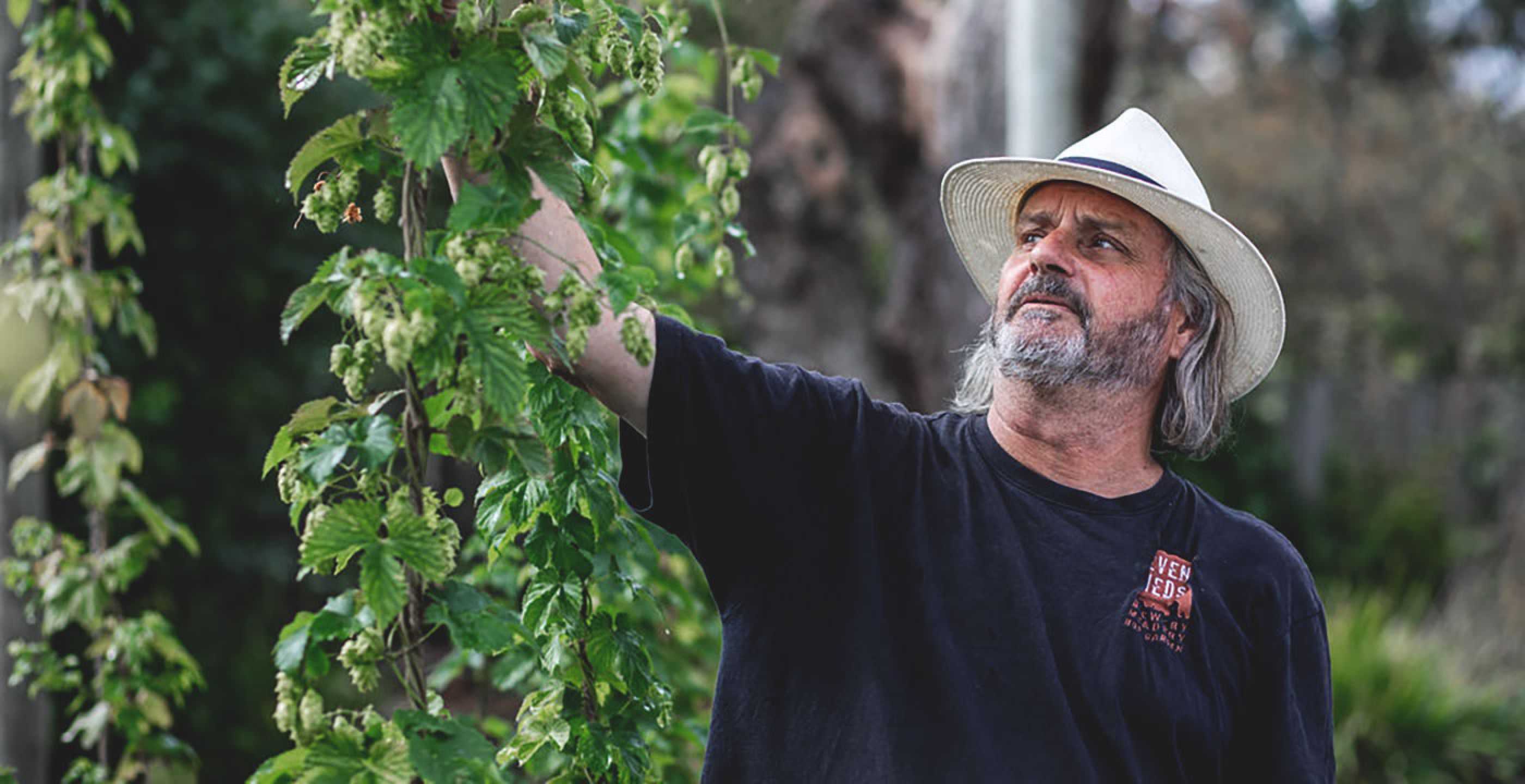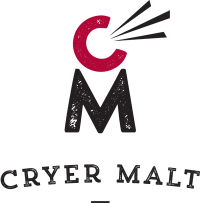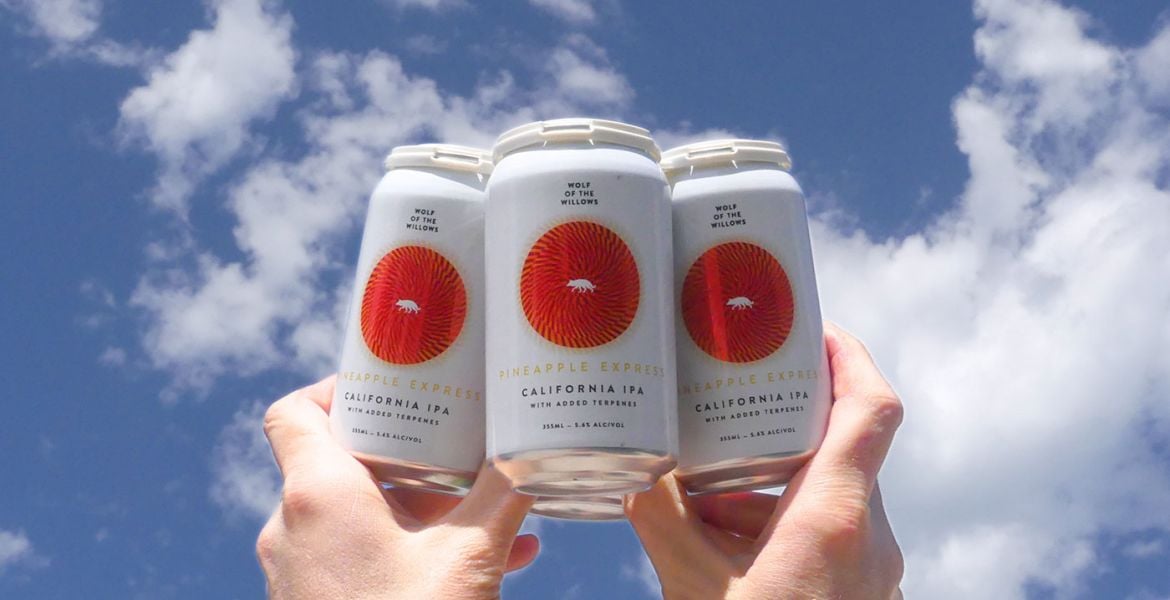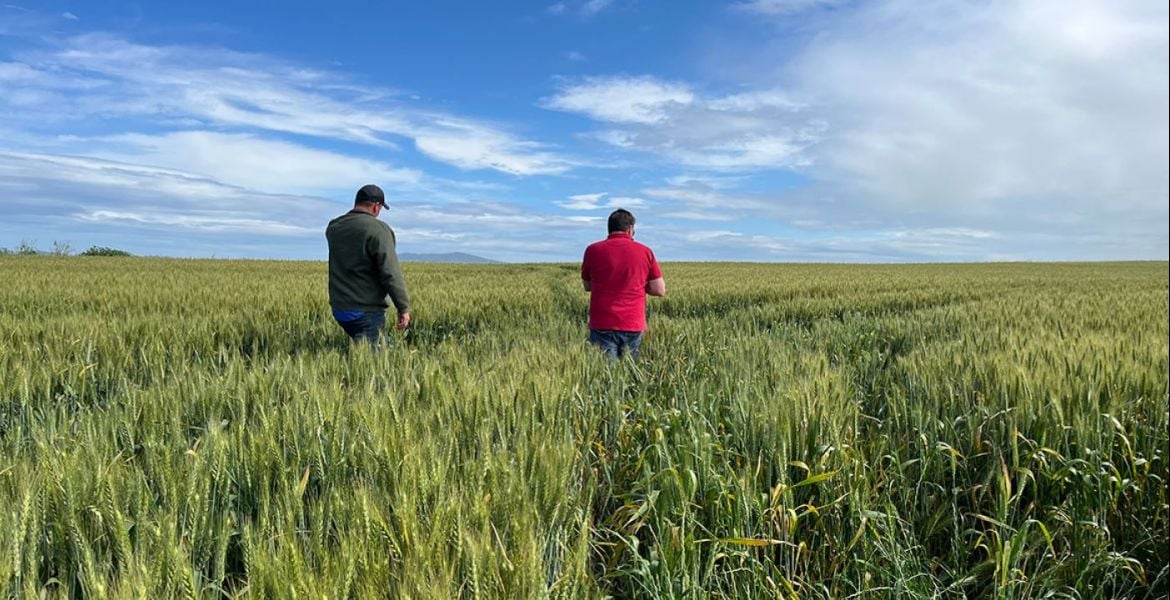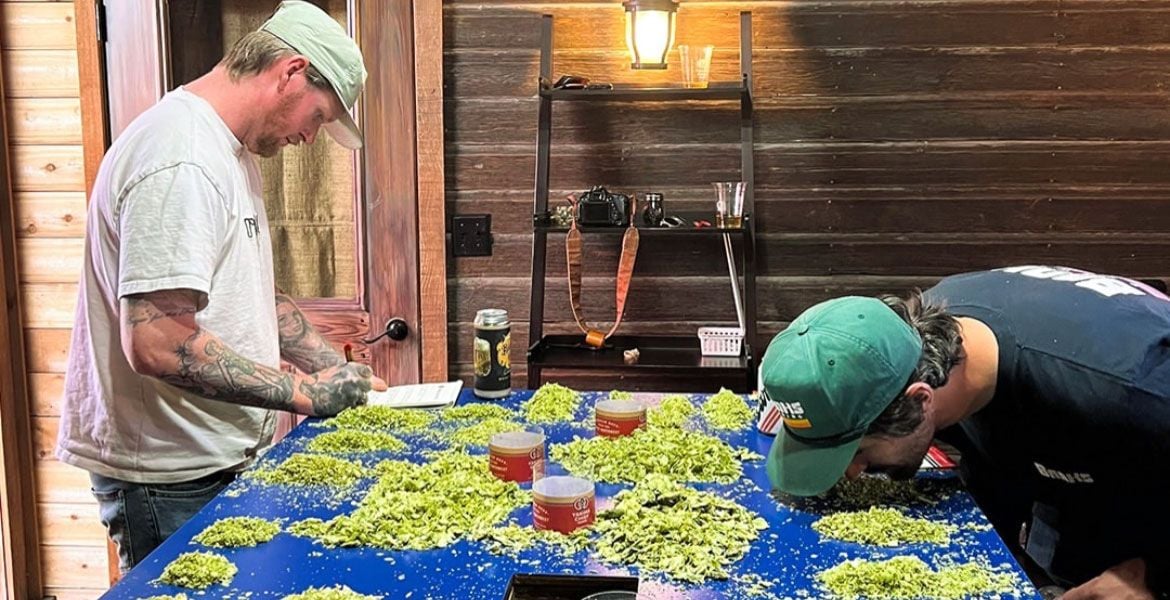"If hop-stringing was an Olympic event, I coulda been a contender!"
Willie Simpson enjoyed a lengthy career writing about beer – publishing a number of books as well as a regular column in the Sydney Morning Herald and The Age – before deciding to swap pen for mash paddle.
Alongside partner Catherine Stark, he launched Seven Sheds – a brewery, hop garden and meadery – in 2008 in Railton, a small town in Tasmania. Over the years, they've released many beers exploring historical styles, even recreating the journey that barrels of IPA would have made between the UK and India by sending their own back and forth across the Bass Strait.
With their seventeenth hop harvest underway, Willie dipped back into his former profession for a look back over nearly two decades tending hops and the changes taking place in the wider beer world.

Before we fired up our artisan brewery or built our tasting room, we planted a hop garden. It seemed like a great idea at the time. We wanted to surround our visitors with the live ingredient that ended up in their glass, just as a vineyard can embroider a wine experience. Besides, north-west Tassie is the ideal latitude to grow humulus lupulus.
Little did we know.
This year will be our seventeenth season, so I wanted to call our annual harvest beer Summer of the Seventeenth Hop, after the classic Australian play.
“Hang on,” my mate Tim mused when I told him, “isn’t that when it all went pear-shaped for the main characters?”
Well, yes, it was. And, yes, it has all gone a bit lumpy for craft brewers in the current fractious beer-scape. Regular brewery closures and others going into administration are the new normal.
At the beginning, though, we were wide-eyed innocents. When a commercial hop farm closed up the road at Gunns Plains, we bought a bunch of their eight-metre poles and heavy cables for a song.
An acquaintance helped us design and erect our modest 20-by-10-metre trellising (he just happens to be the son of Tasmanian hop royalty). We dug the metre-deep holes for the thirteen poles by hand.
We planted Fuggle, Golding and Styrian Golding – classic Euro/UK varieties which would suit the beer styles I had in mind; and we added Leggett, a new strain which had been bred to suit Tasmanian growing conditions.

The first season’s harvest was pretty feeble, as expected. Meanwhile, the beer side of things took off like we’d hitched a ride on a runaway freight train. We struggled to churn out enough beer from our twin open fermenters to keep up with demand. All our beers are bottle- and keg-conditioned, so space was always a challenge and our shed was soon chocka with maturing stock.
Within the first three years we both gave up our day jobs, started putting in ridiculous hours and never quite matched those lost revenue streams. The joys of an artisan business. But it was a wild, fun ride, mostly. Initially, one Hobart pub took every keg we could fill, and we pitched our marquee at food and drink festivals across the state.
Being so time-poor, the hop garden got sadly neglected. Winter weeding was often left to backpackers and I was sometimes weeks late putting up the strings. While the Fuggle and Leggett were reasonably productive, the Styrian Golding failed to launch and the Golding grew only tiny cones which took forever to fill a bucket on picking day.
We hit Peak Beer in 2015. Our cobbled-together brewhouse cranked out more than 40,000 litres that year and at one event alone – the week-long Taste of Tasmania – we sold 60 kegs.
And then the competition arrived. In droves.
Almost overnight, half a dozen of our Hobart outlets became our direct competitors – either installing their own breweries or replacing our beers on tap with their own contract-produced lines. While the industry as whole went on a turbocharged bender of ramped-up production and new start-ups, we trimmed our sails.
We brewed less volume year on year, as we concentrated on the tourist market coming through our tasting room and a handful of tap outlets in our local region. And I spent more time learning to become a hop farmer.

We pulled out the two under-performing varieties and replaced them with Cascade and a second row of Fuggle. Over time, I embraced the seasonality of the hop garden: weeding diligently in winter and building up the mounds with extra top soil; mulching with pea straw, ready for the first shoots to appear in early September.
Each autumn I hook up the trailer and drive to Sassafras to pick up a large bale of pea straw from Farmer Rob. He loads the bale onto the trailer with the tractor forks, I hand over the cash and then we stand around like a couple of farmers anywhere – talking about the weather, the price of diesel, COVID, (sometimes) our latest flood, and whatever has impacted our businesses lately. Through all these years, the price of Rob’s bale is about the only thing which hasn’t gone up in price.
If hop-stringing was an Olympic event, I coulda been a contender! With a double string attached to my dibbler, I toss it high enough to just clear the wire and flop down to earth (just like Fosbury himself). Then it’s a matter of pulling over the second string, untying it from its mate, making a slip-knot and pulling it tight against the top wire. Rinse and repeat down the row – three strings per plant, 33 strings per row.
When I’m in the zone I can nail the whole row with 33 perfect tosses. “And the gold medal for hop stringing goes to … Tas-mania!”
The dibbler is really just the bottom part of a swing-ball set but it does the job for tossing and actual “dibbling”. This is where I go back down the row, rolling the string ends into tight balls and driving them into the ground with said dibbler.
Once the hop bines are about a metre long, it’s time to train them onto the strings – three shoots per string, delicately wound around clockwise. The bines have tiny prickles which grip on tight as they wind their way upwards, sometimes growing 50 to 60mm a day. Timing is crucial to ensure most of the bines reach the wire around the summer solstice – going too early means they’ll overshoot and dangle about hopelessly; too late and the bines struggle to hit the wire at all.
Flowering hop bines are all female (just like their close cousin cannabis) and once the days start getting shorter, these girls sprout laterals where the flowers or cones will develop. First, a furry “burr” appears which – a bit like a tadpole turning a frog – will morph into a miniature hop cone around the end of January. Now it’s the time for a final burst of fertiliser and regular watering as the cones get plumper and build up their precious resins.
In late summer the hops become the rock stars of our tasting room. Visitors often emerge from their cars and head straight to the garden, drawn by their charismatic display; others sit on our deck and take selfies with a tasting paddle and the lush, green curtain in the background.

Hand-picking hops is slow and laborious, so you need cunning ways to co-op unpaid help. For our annual hop picking day in early March, we “pay” our pickers with hop tokens, just like the old days. These are exchanged for cups of beer and bratwurst rolls, so they never know they’re working, basically, for well below the minimum wage.
The hop bounty gets dried in one of our sheds and a fair whack goes into an annual harvest brew. The rest is vacuum-packed and stored in our coolroom for future use. The plants are dormant over winter, careless of our hard frosts and then, come spring, will send their shoots upwards like clockwork.
After harvest I’ll use the leftover bines to create a Hop Imp, basically a life-size wicker man which we hang up between hop poles. In the depth of winter, once he’s nicely dry and gnarly, we share some hearty food with friends, all washed down with some of our stronger ales. Later, a bottle of single malt is uncorked and we burn the Hop Imp, cheering lustily to chase away the bad vibes and ensure a bountiful harvest the following season.
And then we’ll start all over again, ready for our 18th season.
Who knows what lies ahead for craft beer? When you hear that young French people are turning away from wine, more young Aussies than ever are choosing not to drink alcohol at all, and cost-of-living pressures have turned craft beer into a luxury item, you have to wonder.
And old mate Tim was right – the Doll play ends badly for the central trio. But the movie version had a different ending, where Roo and Olive are reconciled and a brighter future beckons.
Let’s see how it goes with Summer of the Seventeenth Hop.
Photo at top of article by Ness Vanderburgh, supplied by Seven Sheds.

